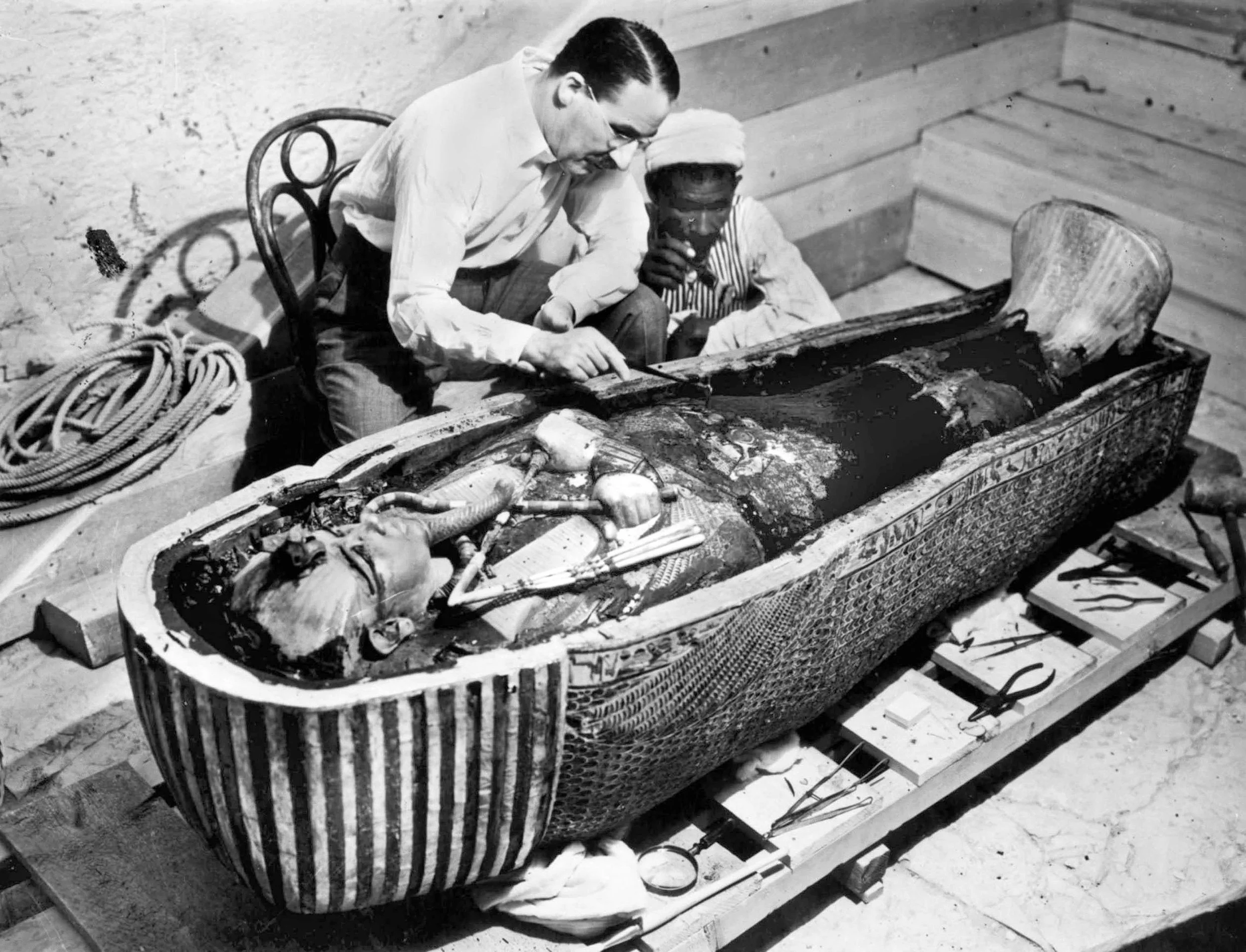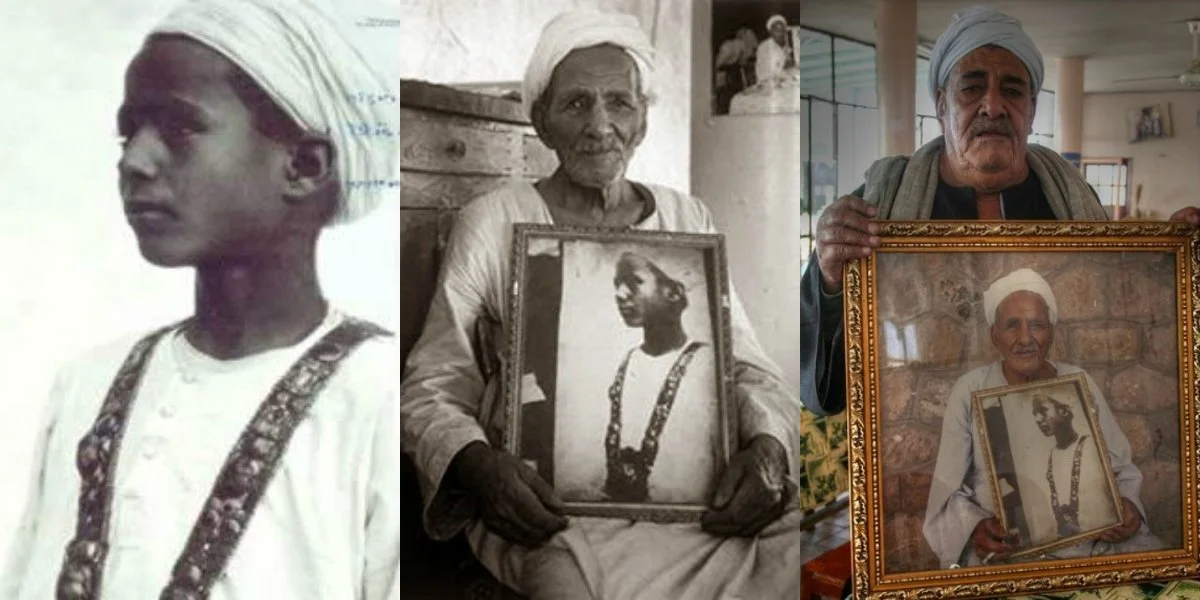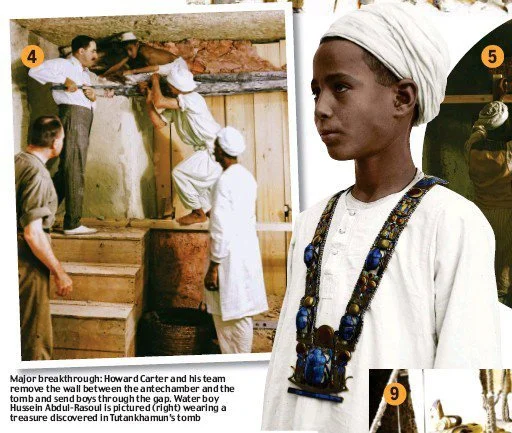Meet The Ifrit, Enforcers Of Curses
Let’s talk about the curse of the mummy.
Or lack thereof.
Hollywood and American popular culture have perpetuated the curse of the mummy, as in, the mummy itself is cursed.
In reality, though, mummies were not cursed themselves: mummies were the things that needed to protected by curses. I’ve said it before, and I’ll say it again: The curses associated with mummies in real life are to protect the bodies so that souls can later reinhabit them. So, rather than curse the mummies themselves, the “curse of the mummy” on the actual Egyptian tombs was to protect the mummies from intruders.
Egyptologist Bob Brier explains mummies’ importance best when he says, "The significance is if you're going to use your body again in the next world, you want it to be complete."
The bottom line is, when it comes to the contents of tombs, You need that for later. And what kind of resurrected corpse would you be if some piddly little thief busted in and stole your liver?
More specifically, the piddly little thief would have stolen the alabaster canopic jar with the head of Imsety the funerary god and son of Horus which held your liver, but your liver would go with its container, nonetheless, and where would you be without it in the afterlife? Nowhere. Like I said. You need those parts for later.
The question still remains: who does the protecting, then? According to some, and in particular the head of one infamous Egyptian family, protective curses enlist the ifrit to guard those tombs.
The family I mentioned is Abdel-Rassoul, and the head of it (at the time) was Sheikh Hussein Abdel- Rassoul. the ifrit enacts the curse. You might recognize Sheikh from the photograph of him as a child, working in Howard Carter’s expedition that excavated the tomb of Tutankhamun, modeling some of the late pharaoh’s funerary jewels. Carter asked him (the waterboy, and the son of the foreman) to model the breastplate because he thought Sheikh and Tutankhamun were about the same size.
Though this photograph in particular is immortalized in the popular consciousness, the Abdel-Rassoul family was famous—or rather infamous—generations before the opening of Tutankhamun’s tomb, though. Sheikh was a descendent of some of the most infamous tomb robbers Egypt has ever known.
Well... some people consider them robbers. I, personally, don’t think they were. Here’s the story so you can judge for yourself:
Legend has it that while herding his goats one evening, Ahmed, the youngest of three brothers, found that his missing kid had fallen down a crevasse. When Ahmed lowered himself into the shaft on a rope, he realized he was in an undisturbed tomb, specifically, he had discovered the first tomb found in modern times.
Sure, tombs had been looted, but they were usually looted by the very artisans who built them. After all, the building of a tomb started when a king was coronated, and it was bad luck to stop its construction until he died… that left a paycheck unpaid. What Ahmed found was the first contemporary cache, and it was bank. Literally.
Historians say that the tomb contained mummies from multiple dynasties because the priests of the time had relocated them for safety—to protect them from graverobbers, specifically.
Yet here we find ourselves, three millennia later, with the same potential problem.
Ahmed and his brothers made a pact. Once per year, they’d open the cache and sell a few of the antiquities from this priestly cache of royalty. The colonial government got wind of these goods, seeing ancient artifacts surface in private collections from kings whose tombs had never been located. The French (and then British) government arrested the two younger brothers and charged them with stealing. They brutally interrogated (read: TORTURED) the Abdel-Rassouls to find out where the treasure was.
When I said earlier that “some people” think the Abdel-Rassouls were robbers, by “some people” I think I was really saying “Imperialist bastards.” My question is—and by that, I mean, my defense of the family is—it’s their land, ain’t it? So, by colonial rules, that’s THEIR SHIT. Of course, the world powers disagree with my rationale, which is, I admit, very American. The powers felt entitled to that history. I get that. I even agree: history should be accessible for everyone.
But let’s be real: history wasn’t the motivation here. You know what was? TRAYZZZURE.
I know this because when the elder brother (the one who had not yet been interrogated) confessed the location to the local police, you know what they did? I’ll give you three guesses, and the first two don’t count.
Yep, they hired all the fellahin from around the country to box up the mummies STAT. And they shipped them downriver to the British Museum in Cairo while all the people who lived near Luxor stood on the banks of the Nile and fired guns into the air and wept and tore their clothing in the fashion of a traditional funeral.
Plus, the excavation was an archaeological nightmare: nothing was mapped, nothing sketched, no one knows where everything was or in what order. So, it wasn’t about the history at all, was it?
When I look at it too hard, it doesn’t even seem to be about the treasure: the storage facilities at Cairo were almost immediately overwhelmed, so the dignitaries gave mummies and artifacts to other world powers as gifts.
More than anything, it was about power. It’s always about power. More than anything.
To bring us full circle to curses, Ahmed, the youngest brother, was Sheikh’s great-uncle. Mohamed, the eldest, was his grandfather.
In an interview given before his death at 87 in 1997, Sheikh said, "Tradition says that on every tomb a spell has been cast, and if you do not know the anti-spell, there will be big problems… Not many know this anti-spell.”
One detail that Sheikh revealed in this same interview was that during the discovery of the priestly cache, an ifrit guarded the tomb.
One detail that Sheikh revealed in this same interview was that during the discovery of the priestly cache, an ifrit guarded the tomb.
In 1871, when the three Abdel-Rassoul brothers were walking in the mountains of Deir el Bahri above Hatshepsut’s temple, something otherworldly was also afoot. An opening in the rockface got Ahmed’s attention. In this story, to test the shaft’s depth, he tossed in a rock and a long pause ensued before they heard it land. Ahmed descended into the shaft to explore the treasure they all hoped was buried within. His brothers waited.
Then they heard him scream and pulled him up, out of the burial shaft. He told them he had encountered an ifrit, a specific type of evil djinn.
According to the scholar Robert Leibling, djinn in general are often associated with “crumbling castles, hidden treasure, hoards, and lost cities. They haunt old, abandoned buildings and serve as guardians for any treasures that lie concealed in their ruins” (65). But the ifrit is different. Amira El Zein says, “The term ‘ifrit often presents a problem for the scholars trying to classify the jinn. Many commentators on the verse cited above maintain the word ‘ifrit is an adjective referring to a specific powerful jinni rather than a separate and distinct type among the jinn. Later the word came to describe any powerful and cunning man; in which case, it could refer to the dark powers within the human psyche” (142).
She also says that the Qur’an only mentions ifrit once, when King Solomon, who controlled all the djinn, asked for the Queen of Sheba’s throne. The ifrit offered to bring it for him, stating that he was “strong” and “trusty.”
But just because their origins aren’t written in detail does not mean that folk Islam doesn’t address the ifrit. Back at the tomb, the legend says that evidence of the ifrit returned the day after the discovery, “when villagers detected a nauseating stench on the area of the path, the telltale sign of an angry ifrit whose resting place had been disturbed.” For that reason, the villagers steered away from the site.
That avoidance might have been the exact thing that the Abdel-Rassoul brothers were after…and if that’s true, I say, more power to them. For the next ten years, the family slowly brought out the antiquities—like ushabtis, papyri, and funerary jewelry all in exceptional condition—selling them little by little so as not to arouse suspicion.
The two younger brothers were arrested and tortured for information about the antiquities by the colonial government and their local proxies. They did not give any information. Rather, the eldest brother who had already avoided interrogation feared the torture, and he turned in his brothers rather than risk them turning on him. During his confession to the local police chief—the same one that brutalized his younger brother so badly that he walked with a limp for the rest of his life—he admitted that he and Ahmed had killed a donkey and thrown it into the opening of the burial shaft to create the adverse stench that repelled other villagers.
A decomposing donkey would undoubtedly smell terrible.
But, as they say, the world contains multitudes.
Who is to determine whether it was only the smell of decomposition alone or also that of the disturbed ifrit?
Works Cited
Abu Dashish, Ali. “Discover: Royal Mummies Cache in Luxor.” SeeEgy. March 9, 2019. https://see.news/discover-royal-mummies-cache-in-luxor/
Brier, Bob. Egyptomania: Our Three Thousand Year Obsession with the Land of the Pharaohs. St. Martin’s Press, 2013.
Chrisikopoulos, Vassilis. “Defining Hidden in Ancient Egypt.” Proceedings of the 4th Biennial of Architectural and Urban Restoration. April, 2018.
elBahrawy, Abla. “Voices in the West Bank.” https://tijdschriftkunstlicht.nl/wp-content/uploads/voices-in-the-westbank.pdf.
Dashish, Ali Abu. “After 98 Years, Know Real Tutankhamun Discoverer.” See Egy. https://see.news/tutankhamun-abdel-rassoul/
Mark, Joshua J. “The Temple of Hatshepsut.” World History Encyclopedia. 2017.
“Ministry of Antiquities (Egypt).” Devex. 2000-22. https://www.devex.com/organizations/ministry-of-antiquities-egypt-137067
Riggs, Christina. Unwrapping Ancient Egypt. Boomsbury,
—. “Water Boys and Wishful Thinking.” Photographing Tutankhamun. 2020.
Stratos, Anita. “Where Have All the Pharaohs Gone?” Tour Egypt. Volume II, Number 8. August 1, 2001. http://www.touregypt.net/egypt-info/magazine-mag08012001-magf4a.htm
“The priestly cache.” Museum of Cultural History. University of Oslo. https://www.khm.uio.no/english/visit-us/historical-museum/exhibitions-archive/the-mummy-lives/the-priestly-cache/index.html#toc4
McBrayer, Mary Kay. “Just How Real is The Mummy’s Curse?” FANGORIA. https://www.fangoria.com/original/just-how-real-is-the-mummys-curse/
“This Lost Ring of Ancient Mythology Is Believed to Have Mystical Powers.” The Line Up. https://the-line-up.com/seal-of-solomon
Stengle, Sonny. “The Mysteries of Qurna.” Tour Egypt. Volume II, Number 7: July 1st, 2001. http://www.touregypt.net/egypt-info/magazine-mag07012001-magf1.htm








